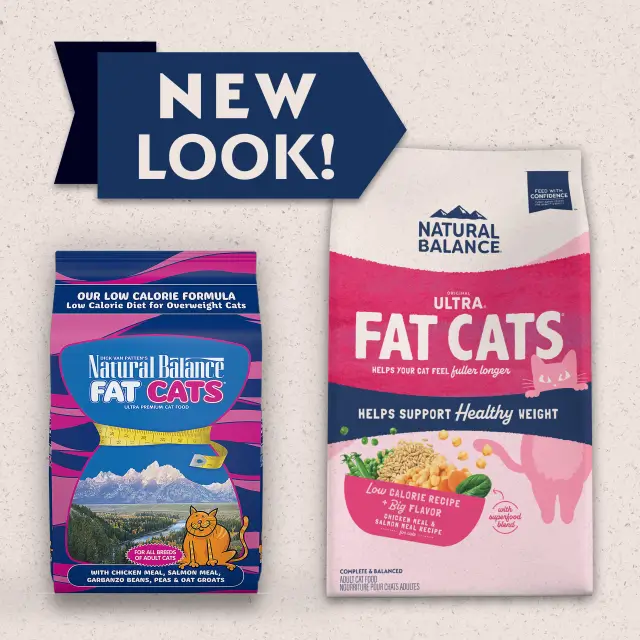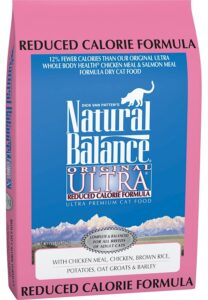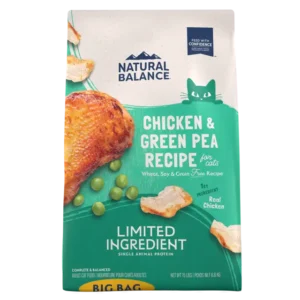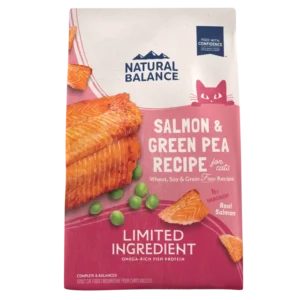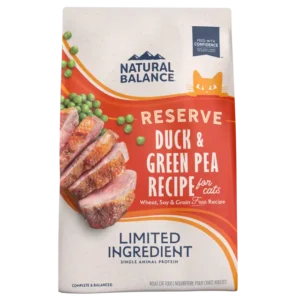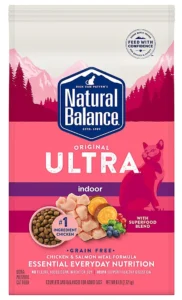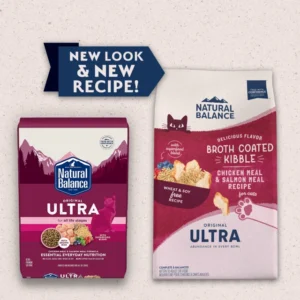Natural Balance
Fat Cats Chicken Meal & Salmon Meal Recipe
Adult
Light
Indoor and Outdoor

Click to reveal the score breakdown
Tap to view ingredients, guaranteed analysis and more
Product Summary
Natural Balance Fat Cats Chicken Meal & Salmon Meal Recipe is a low-calorie dry cat food formulated for adult cats needing weight management. The primary ingredients, chicken meal and salmon meal, offer high-quality protein, while the inclusion of L-Carnitine supports fat metabolism. This formula is enriched with a fiber blend to enhance satiety and includes antioxidant vitamins for immune support. With Omega-3 and Omega-6 fatty acids, this recipe promotes skin and coat health.
Pros:
- High protein content at 35% supports lean muscle maintenance.
- L-Carnitine (30 mg/kg) aids in fat metabolism, assisting with weight control.
- Contains Omega-3 and Omega-6 fatty acids for coat health, at 0.25% and 1.5%, respectively.
- Wheat and soy-free, suitable for cats with sensitivities to these ingredients.
- Taurine (0.15%) supports heart health and overall wellness.
Cons:
- Crude fiber is relatively high at 9%, which may not suit all cats’ digestive systems.
- At 9.5%, fat content might be lower than ideal for highly active cats needing more energy.
- Caloric density is moderate at 320 kcal/cup, which may not be sufficient for cats with higher caloric needs.
Ingredients
Chicken Meal
Salmon Meal
Pea Protein
Chickpeas
Oat Groats
Peas
Pea Fiber
Dried Plain Beet Pulp
Dehydrated Alfalfa Meal
Oat Hulls
and also:
Dried Tomato Pomace, Chicken Fat (Preserved With Mixed Tocopherols), Natural Flavor, Brewers Dried Yeast, Dried Egg Product, Salmon Oil (Preserved With Mixed Tocopherols), Spinach, Parsley, Carrots, Choline Chloride, Salt, Potassium Chloride, Vitamins (Vitamin E Supplement, Ascorbic Acid, Niacin Supplement, Vitamin A Supplement, Thiamine Mononitrate, D-Calcium Pantothenate, Riboflavin Supplement, Pyridoxine Hydrochloride, Vitamin B12 Supplement, Folic Acid, Vitamin D3 Supplement, Biotin), Minerals (Zinc Proteinate, Zinc Sulfate, Ferrous Sulfate, Iron Proteinate, Copper Sulfate, Copper Proteinate, Sodium Selenite, Manganese Sulfate, Manganese Proteinate, Calcium Iodate), Inulin, L-Ascobyl2-Polyphosphate, Dl-Methionine, L-Carnitine, Taurine, L-Lysine Monohydrochloride, Citric Acid (Preservative), Mixed Tocopherols (Preservative), Yucca Schidigera Extract, Rosemary Extract
Guaranteed Analysis
Crude Protein
35%
Crude Fat
9.5%
Crude Fiber
9%
Moisture
10%
Omega 3
0.25%
Omega 6
1.5%
Metabolizable Energy
3200 kcal/kg
Product last updated: October 13, 2024, 6:18 AM
Please hold on while we’re getting the best offers for you
7264

